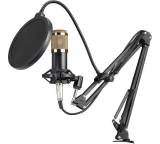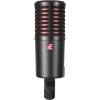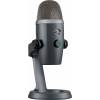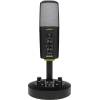Mikrofon Testberichte (S. 8/21)
Diese Quellen haben wir neutral ausgewertet (letzter Test vom ):
Mikrofone Bestenliste

Gesangsmikrofon

Funkmikrofon

Kamera-Mikrofon

Handy-Mikrofon
749 Ergebnisse entsprechen den Suchkriterien
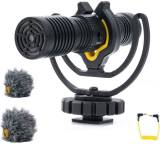
Sehr gut
1,4
- Typ: Kamera-Mikrofon
- Technologie: Kondensator
- Richtcharakteristik: Niere
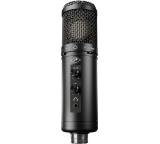
Sehr gut
1,0
- Typ: Podcastmikrofon
- Technologie: Kondensator
- Richtcharakteristik: Niere
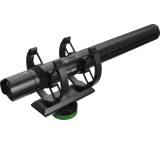
Gut
1,6
- Typ: Kamera-Mikrofon, Richtmikrofon
- Technologie: Kondensator
- Richtcharakteristik: Superniere

Gut
2,0
- Typ: Kamera-Mikrofon, Handy-Mikrofon, Richtmikrofon
- Technologie: Kondensator
- Richtcharakteristik: Superniere

Gut
1,8
JLAB Talk Go
- Typ: Podcastmikrofon, Tischmikrofon
- Technologie: Kondensator
- Richtcharakteristik: Niere, Omnidirektional (Kugel)
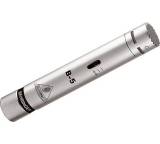
Gut
1,9
- Typ: Instrumentenmikrofon
- Technologie: Kondensator
- Richtcharakteristik: Niere, Omnidirektional (Kugel)
Zum Produkt
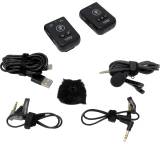
Gut
2,5
Mackie EM Wave LAV
- Typ: Funkmikrofon, Ansteckmikrofon
- Richtcharakteristik: Omnidirektional (Kugel)
- Anschluss: Klinke (3,5 mm)

Sehr gut
1,4
- Typ: Kamera-Mikrofon, Richtmikrofon
- Richtcharakteristik: Stereo, Superniere, Bidirektional (Acht)
Zum Produkt

Sehr gut
1,5
Rode Microphones Stereo VideoMic
- Typ: Kamera-Mikrofon, Richtmikrofon
- Technologie: Kondensator
- Richtcharakteristik: Niere
Zum Produkt

Sehr gut
1,0
- Typ: Funkmikrofon, Gesangsmikrofon
- Technologie: Dynamisch
- Richtcharakteristik: Niere
Zum Produkt

Gut
1,8
- Typ: Kamera-Mikrofon, Funkmikrofon, Handy-Mikrofon, Ansteckmikrofon
- Richtcharakteristik: Omnidirektional (Kugel)
- Anschluss: Kopfhörer-Anschluss, Lightning, USB

Sehr gut
1,0
Sennheiser AVX-MKE2
- Typ: Kamera-Mikrofon, Funkmikrofon
- Technologie: Kondensator
- Richtcharakteristik: Omnidirektional (Kugel)
Zum Produkt
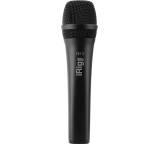
Sehr gut
1,4
- Typ: Instrumentenmikrofon, Gesangsmikrofon
- Technologie: Elektret, Kondensator
- Richtcharakteristik: Niere
Zum Produkt

Sehr gut
1,5
- Typ: Instrumentenmikrofon, Gesangsmikrofon
- Technologie: Kondensator
- Richtcharakteristik: Niere
Zum Produkt

Gut
1,8
PreSonus Revelator
- Typ: Podcastmikrofon, Tischmikrofon
- Technologie: Kondensator
- Richtcharakteristik: Bidirektional (Acht), Niere, Omnidirektional (Kugel)
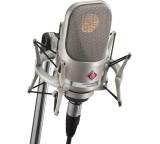
Sehr gut
1,0
Neumann TLM 107
- Typ: Instrumentenmikrofon, Gesangsmikrofon
- Technologie: Kondensator
- Richtcharakteristik: Bidirektional (Acht), Breite Niere, Hyperniere, Niere, Omnidirektional (Kugel)
Zum Produkt
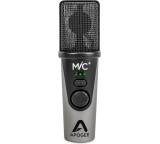
Gut
1,7
Apogee Acoustics MiC+
- Typ: Podcastmikrofon, Instrumentenmikrofon, Gesangsmikrofon
- Technologie: Kondensator
- Richtcharakteristik: Niere
Zum Produkt
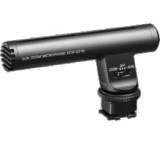
Gut
1,9
- Typ: Kamera-Mikrofon, Richtmikrofon
- Technologie: Elektret, Kondensator
- Richtcharakteristik: Superniere
Zum Produkt
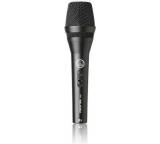
Gut
1,7
- Typ: Gesangsmikrofon
- Technologie: Dynamisch
- Richtcharakteristik: Superniere
Zum Produkt
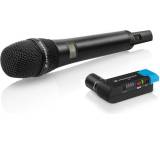
Sehr gut
1,3
- Typ: Kamera-Mikrofon, Funkmikrofon
- Technologie: Dynamisch
- Richtcharakteristik: Niere
Zum Produkt

Gut
2,0
Tascam TM-70
- Typ: Podcastmikrofon, Tischmikrofon
- Technologie: Dynamisch
- Richtcharakteristik: Superniere

Gut
1,8
- Typ: Kamera-Mikrofon, Handy-Mikrofon, Ansteckmikrofon
- Technologie: Kondensator
- Richtcharakteristik: Omnidirektional (Kugel)

Gut
2,0
IK Multimedia iRig Stream Mic USB
- Typ: Podcastmikrofon, Tischmikrofon, Gesangsmikrofon
- Technologie: Elektret, Kondensator
- Richtcharakteristik: Niere
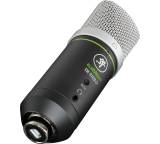
Gut
1,8
Mackie EM-91CU+
- Typ: Podcastmikrofon
- Technologie: Kondensator
- Richtcharakteristik: Niere
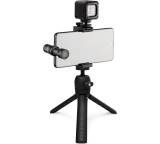
Sehr gut
1,5
Rode Microphones Vlogger Kit USB-C Edition
- Typ: Handy-Mikrofon, Richtmikrofon
- Technologie: Elektret, Kondensator
- Richtcharakteristik: Niere
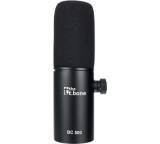
Sehr gut
1,0
- Typ: Podcastmikrofon
- Technologie: Dynamisch
- Richtcharakteristik: Niere
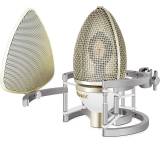
Sehr gut
1,5
- Typ: Gesangsmikrofon
- Technologie: Kondensator
- Richtcharakteristik: Niere

Gut
1,9
Zoom ZDM-1
- Typ: Podcastmikrofon, Tischmikrofon
- Technologie: Dynamisch
- Richtcharakteristik: Superniere
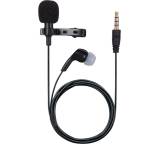
Gut
1,7
- Typ: Ansteckmikrofon
- Technologie: Kondensator
- Richtcharakteristik: Omnidirektional (Kugel)

ohne Endnote
- Typ: Podcastmikrofon, Tischmikrofon
- Technologie: Elektret, Kondensator
- Richtcharakteristik: Niere

Sehr gut
1,1
MSI Immerse GV60
- Typ: Podcastmikrofon, Tischmikrofon
- Technologie: Kondensator
- Richtcharakteristik: Stereo, Bidirektional (Acht), Niere, Omnidirektional (Kugel)

Sehr gut
1,3
- Typ: Gesangsmikrofon
- Technologie: Kondensator
- Richtcharakteristik: Superniere, Bidirektional (Acht), Breite Niere, Niere, Omnidirektional (Kugel)
Zum Produkt

Gut
1,8
- Typ: Gesangsmikrofon
- Technologie: Dynamisch
- Richtcharakteristik: Niere
Zum Produkt
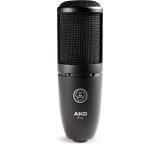
Gut
1,7
- Typ: Podcastmikrofon, Gesangsmikrofon
- Technologie: Kondensator
- Richtcharakteristik: Niere
Zum Produkt

Gut
1,6
- Typ: Instrumentenmikrofon, Gesangsmikrofon
- Technologie: Kondensator
- Anschluss: XLR
Zum Produkt

Gut
1,6
- Typ: Kamera-Mikrofon, Instrumentenmikrofon
- Technologie: Kondensator
- Richtcharakteristik: Niere
Zum Produkt
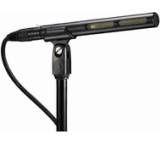
Sehr gut
1,3
Audio-Technica AT875R
- Typ: Reportermikrofon, Richtmikrofon
- Technologie: Elektret, Kondensator
- Richtcharakteristik: Superniere
Zum Produkt

Gut
1,7
- Typ: Podcastmikrofon, Tischmikrofon
- Technologie: Elektret
- Richtcharakteristik: Niere
Zum Produkt

Befriedigend
3,0
- Typ: Podcastmikrofon, Tischmikrofon
- Richtcharakteristik: Niere
- Anschluss: Kopfhörer-Anschluss, USB
Tests
-

-
c't
- Ausgabe: 3/2025
- Erschienen: 01/2025
-
-

-
PC Magazin/PCgo
- Ausgabe: 4/2025
- Erschienen: 03/2025
- Seiten: 1
Mikrofon speziell für Gamer und Streamer?
Testbericht über 1 Mikrofonzum Test -
-

-
MAC LIFE
- Ausgabe: 11/2024
- Erschienen: 10/2024
- Seiten: 8
-



